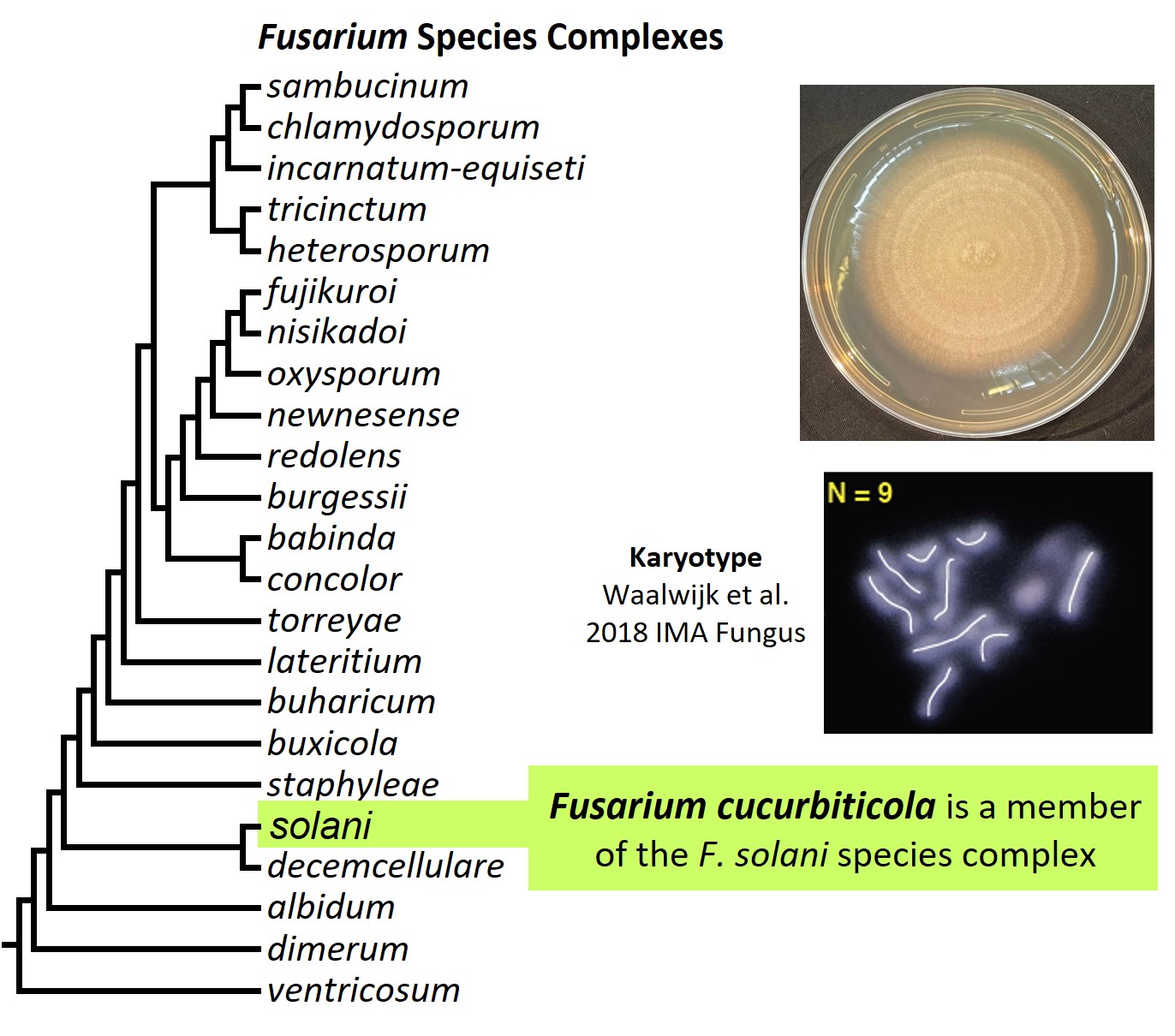
Fusarium (family Nectriaceae) is a species-rich fungal genus that poses a dual threat to agriculture because many species cause destructive crop diseases and/or contaminate infected crops with toxic secondary metabolites (mycotoxins) that are health hazards to humans and other animals. Some Fusarium mycotoxins are frequent contaminants of dried distillers’ grains, coproducts of grain-based ethanol production used as a protein-rich livestock feed. In addition, some species of Fusarium are pathogens of energy crops such as corn and sugar cane. Some species can also exist as endophytes in plants, including some bioenergy crops.
DNA-based phylogenetic analyses have resolved Fusarium into 23 multi-species lineages, or species complexes (Geiser et al. 2021). Fusarium cucurbiticola is a member of the Fusarium solani species complex, which consists of at least 79 phylogenetically distinct species. Collectively, these species have a ubiquitous geographic distribution and occur on a tremendous diversity of substrates, including agricultural soils, rhizospheres, numerous plant species, as well as humans and other animals. During its evolutionary diversification, Fusarium has undergone multiple chromosomal fusions and, as a result, members of early diverging species complexes tend to have more chromosomes (15 – 20) than later diverging complexes (4 – 7). Although it is from a relatively early diverging complex, F. cucurbiticola has only 9 chromosomes (Waalwijk et al. 2018). The fungus causes root, stem and fruit rot of species in the plant family Cucurbitaceae (e.g., pumpkin and squash). There is limited information on the origins of strain NRRL 22153 (ATCC 18099) beyond its isolation from a cucurbit plant. However, the phylogenetic relationships of the strain to other members of the F. solani species complex have been examined extensively (Geiser et al. 2021; O’Donnell et al. 2008).
References:
Geiser DM, Al-Hatmi A, Aoki et al. 2021. Phylogenomic analysis of
a 55.1 kb 19-gene dataset resolves a monophyletic Fusarium
that includes the Fusarium solani Species Complex.
Phytopathology 111: 1064-1079.
O'Donnell K, Sutton DA, Fothergill A, et al. 2008. Molecular
phylogenetic diversity, multilocus haplotype nomenclature, and
in vitro antifungal resistance within the Fusarium
solani species complex. J Clin Microbiol 46:2477-2490.
Waalwijk C, Taga M, Zheng S-L, et al. 2018. Karyotype evolution in
Fusarium. IMA Fungus 9:13-26.
10.5598/imafungus.2018.09.01.02
